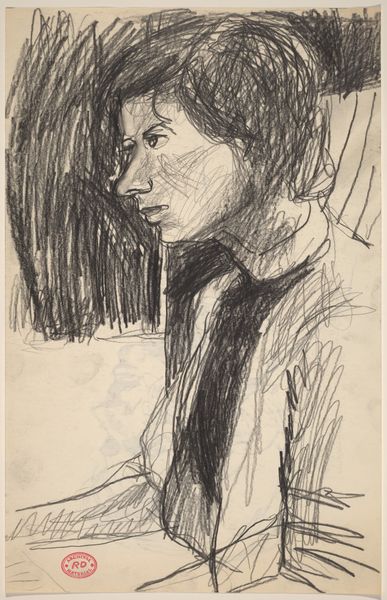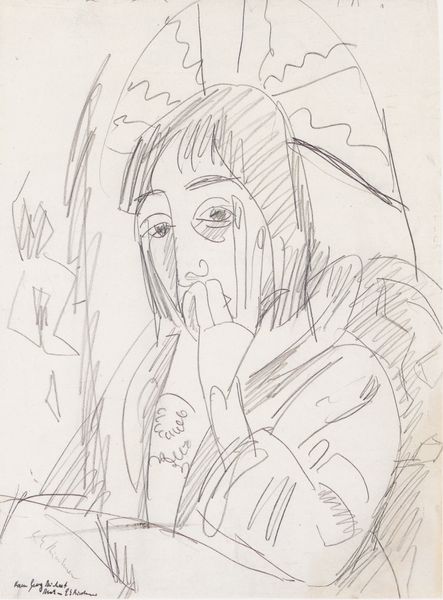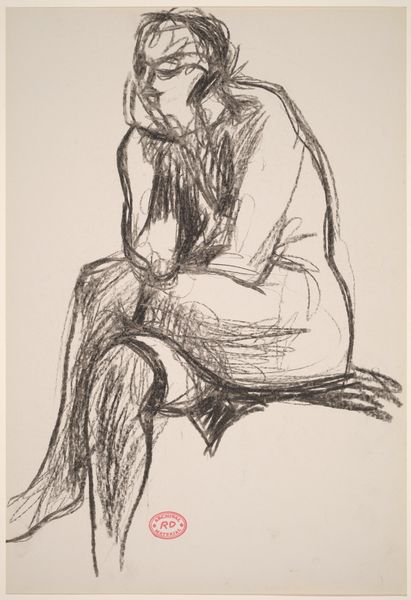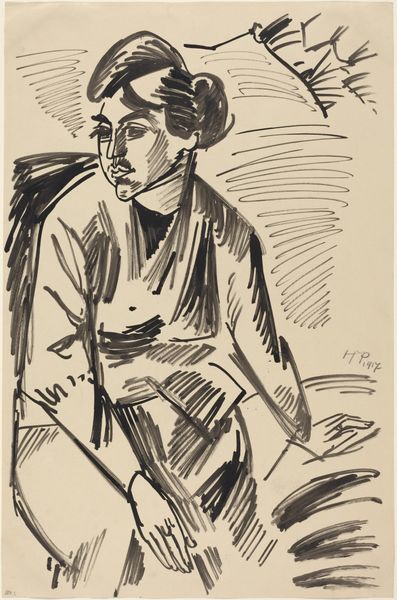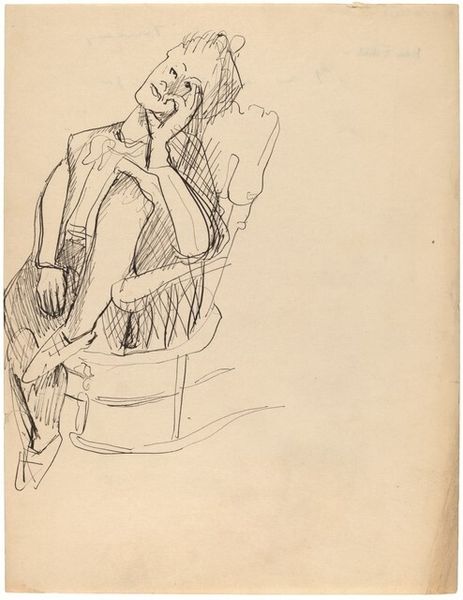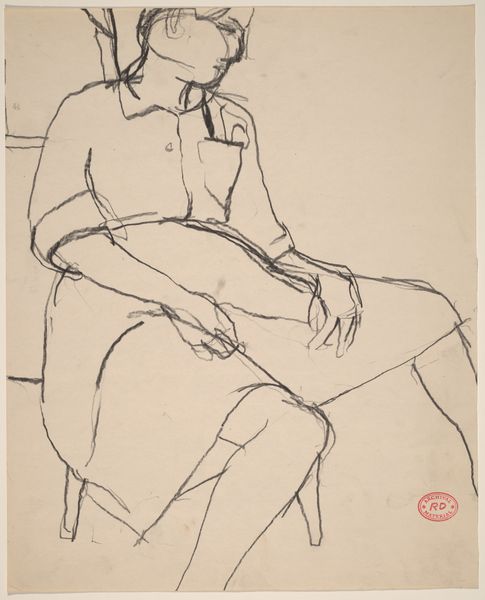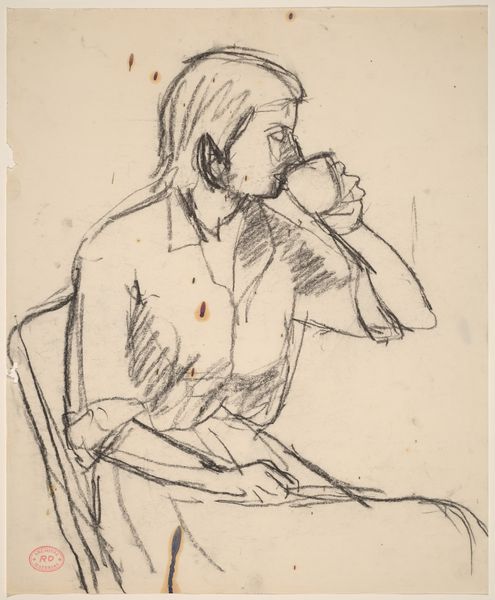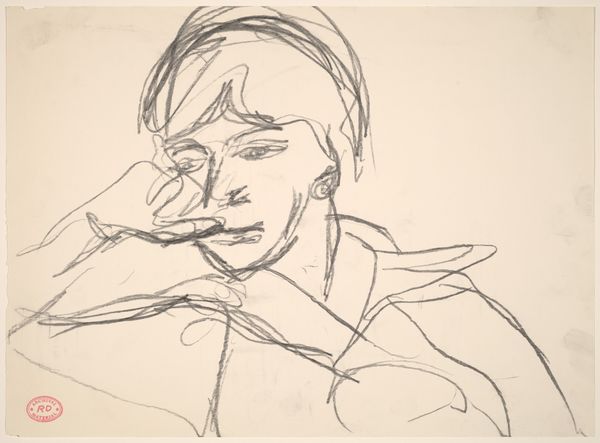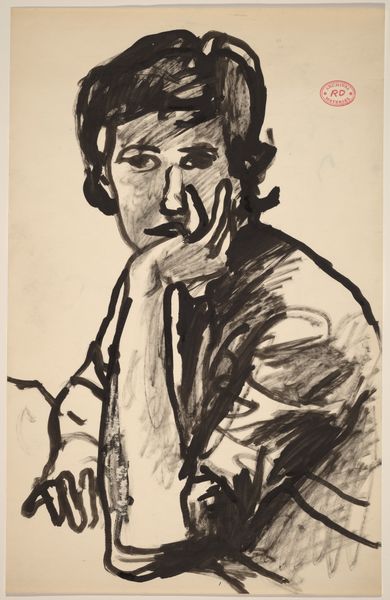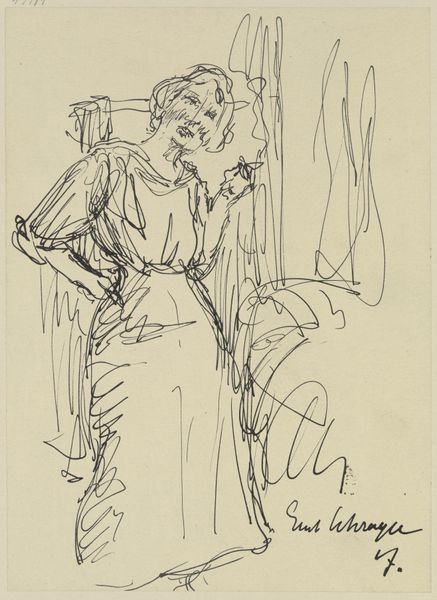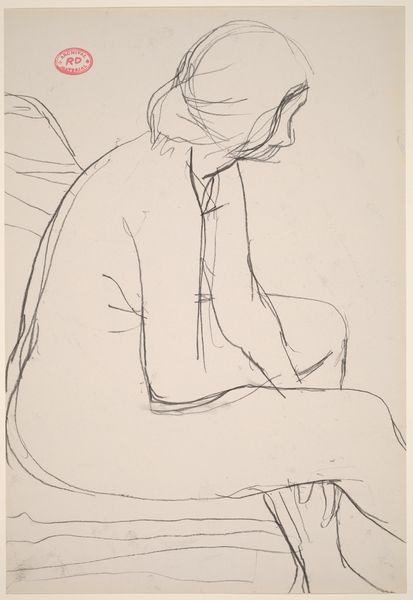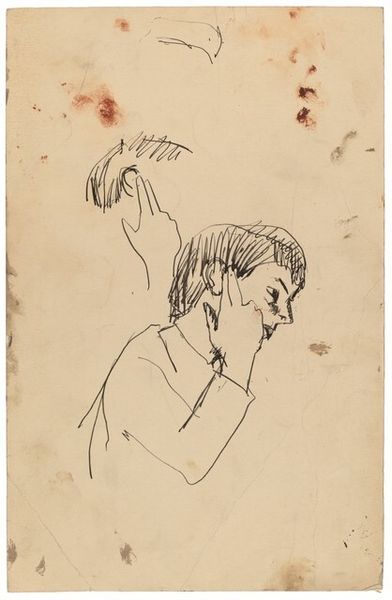
drawing, ink
#
portrait
#
drawing
#
self-portrait
#
caricature
#
caricature
#
figuration
#
ink
#
expressionism
Copyright: Public Domain
Curator: Let's spend some time with Ernst Ludwig Kirchner’s “Bildnis Erna mit aufgestütztem Arm,” an ink drawing circa 1917, housed here at the Städel Museum. Editor: It strikes me as remarkably bleak. The figure seems weighed down, her face a mask of fatigue. The angular lines only heighten the sense of unease. Curator: Given the era, the First World War’s impact resonates. Kirchner volunteered, but his mental health deteriorated, leading to his discharge and institutionalization. This drawing reflects that psychic trauma. It's not simply a portrait; it’s a raw depiction of psychological strain. The lines themselves, look at how agitated they are, really give the sense of mental fragmentation. Editor: Absolutely. The frenetic strokes almost vibrate on the page. But tell me, what can we learn about Kirchner’s technical process and material choices by looking at the piece? What kind of ink did he select? What was the nature of paper like in Germany at that time? How did this limited palette shape his work during such hardship? Curator: Precisely. This ink drawing is consistent with his Expressionist style, of course, but ink, being relatively cheap and easily obtained, also signals the restraints placed upon artists like Kirchner during times of upheaval. He continued working while institutionalized. That creative drive remained even while access to resources might have dwindled. What’s more, the work invites dialogue. It seems the Expressionists turned increasingly to intimate portraiture like this during wartime as they considered shifting political tides. Editor: And this institutional context also informs its public perception, doesn't it? Think about its acquisition, its presentation here at the Städel. How do museums contextualize work produced under such duress? How do these environments shape our own interpretations of Kirchner's subjects and psychology? Curator: Those institutional frameworks certainly impact the ongoing interpretation, providing avenues for us to reflect on the social history of war and trauma through art. I find this drawing exceptionally effective in capturing internal suffering through incredibly expressive line work. Editor: It truly forces us to contemplate how both personal and historical factors, the socio-economic conditions and his method impacted the emotional resonance of art.
Comments
No comments
Be the first to comment and join the conversation on the ultimate creative platform.
